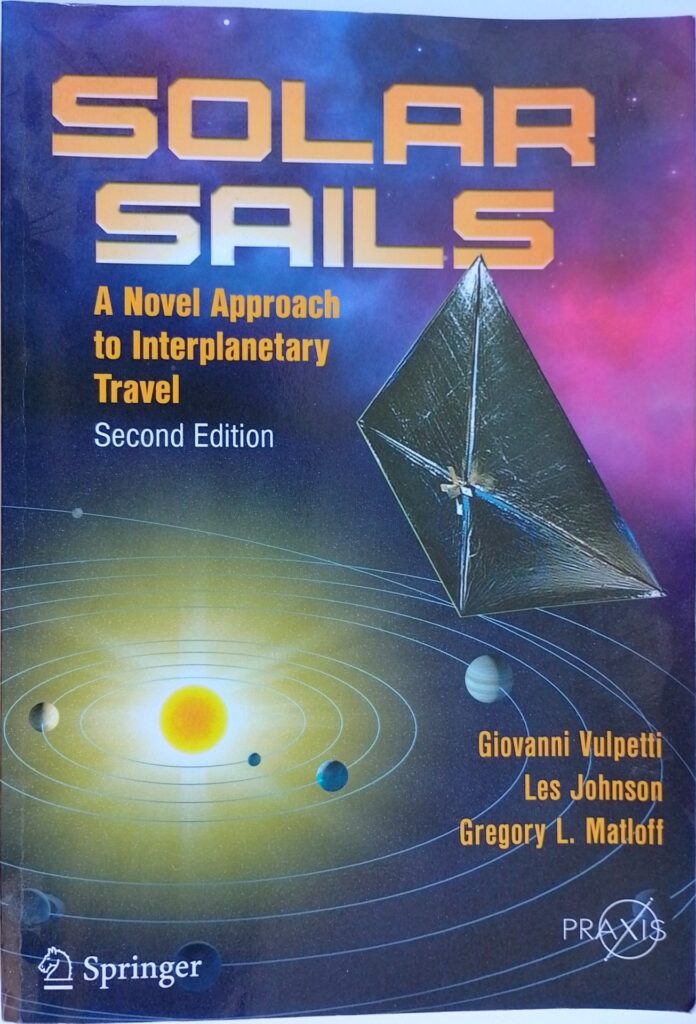2nd edition first published 2015. Praxis Springer, paperback, 2015, pp 277, c.120,000 words (main text).
Vulpetti seems to be the primary writer of this book, judging by the Italian-accented English. He seems to have spent his professional life studying the subject of using the pressure of light from the sun to propel spacecraft and is keen to tell us everything he knows and persuade us that solar sails have a bright future.
This second edition of the book details the state of the art in 2015 with descriptions of all the main experimental attempts, primarily by the Japanese space agency (JAXA), ESA, NASA and privately by the U.S. Planetary Society. Only JAXA’s IKAROS mission and NASA’s NanoSail-D2 were successful. Other attempts either failed on launch or were never funded to launch. The two successes demonstrated that the concept works. Since the book was written the Planetary Society’s second attempt, LightSail 2, has also been successful.
The concepts of solar sailing and its virtues (and limitations) compared to other methods of spacecraft propulsion are discussed in considerable detail. The main benefit is, of course, that no fuel needs to be carried for manoeuvring (changing velocity vector). The disadvantages include the need for a large sail because of the low light pressure, and that the pressure declines with distance from the sun.
There are detailed discussions of materials and structures of solar sails, and ideas for tuning the sail to ensure thrust is being delivered in the desired direction.
The last third of the book goes into considerable technical detail, perhaps best appreciated by those with a professional interest in the subject, and preferably a master’s degree in physics. There is some interesting material here for the non-specialist like the discussion of the light output of the sun, both its spectrum and variability over time, which are important factors to the solar sail mission designer. This leads into a long section on mission design, optimising the trajectory of the spacecraft to maximise the thrust it receives, including by deep-dives close in towards the sun.
© William John Graham, June 2022

